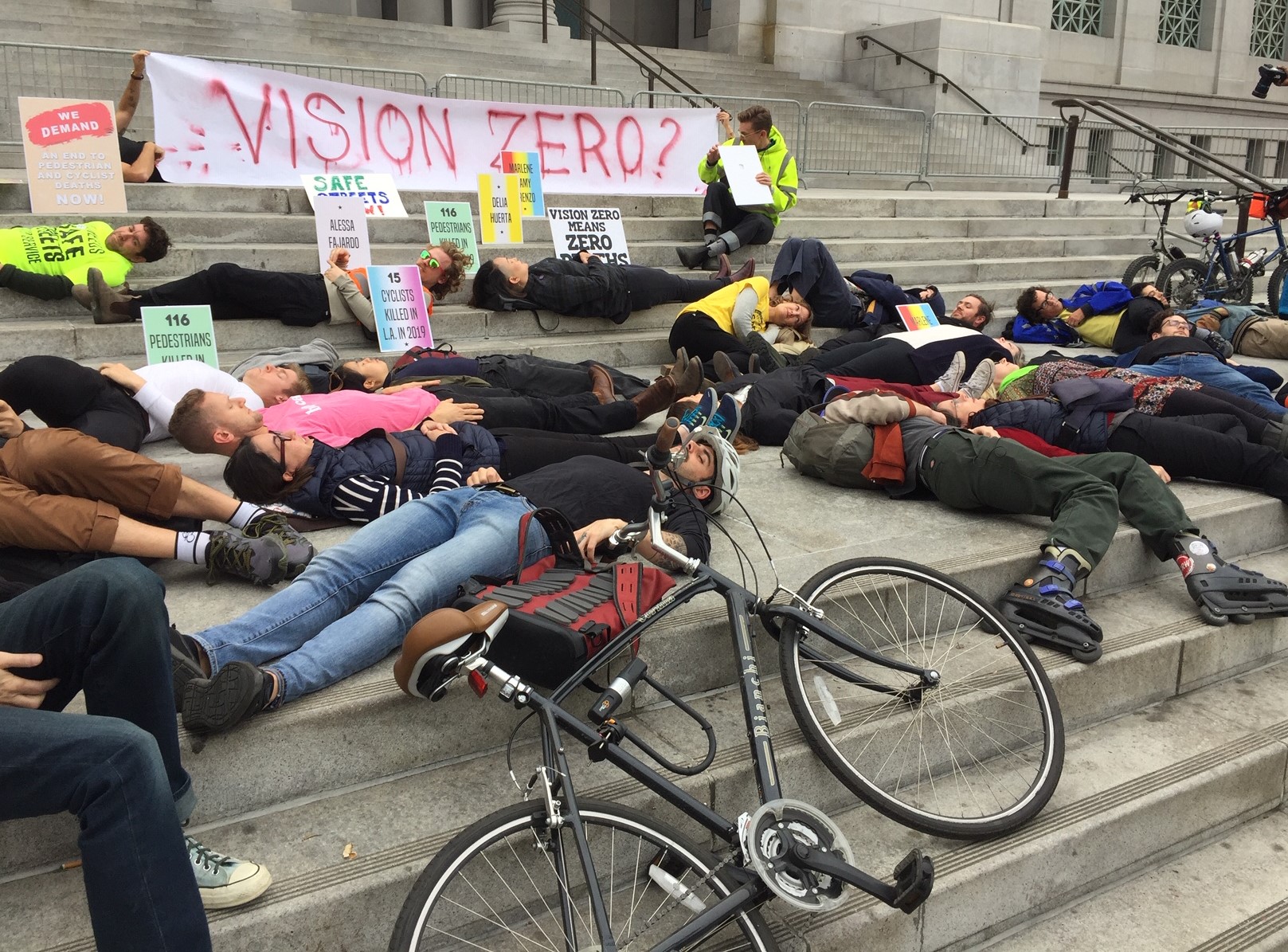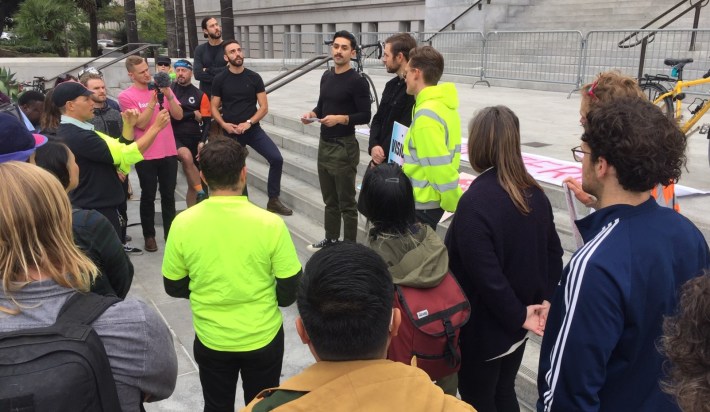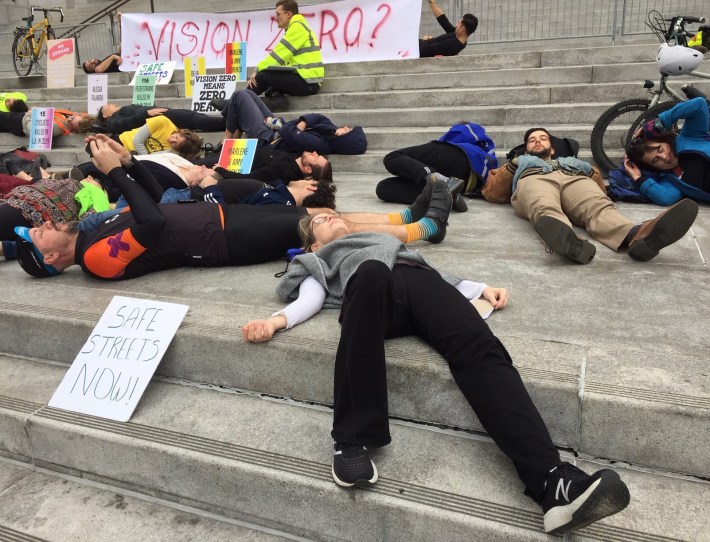Note: Metropolitan Shuttle, a leader in bus shuttle rentals, regularly sponsors coverage on Streetsblog San Francisco and Streetsblog Los Angeles. Unless noted in the story, Metropolitan Shuttle is not consulted for the content or editorial direction of the sponsored content.
Just over thirty people gathered for a die-in demonstration on the steps of L.A. City Hall this morning. Safe streets advocates urged the city of Los Angeles to make good on its Vision Zero commitment to ending traffic deaths by 2025.
Though L.A. drivers are on track to kill more than 200 people in 2019, speakers emphasized the especially horrific deaths of Marlene and Amy Lorenzo, and of Alessa Fajardo - all kids on their way to school. In a crosswalk near Exposition Park in April, a driver killed sisters Marlene (14) and Amy (12) while they were walking to school. In a Koreatown crosswalk in October, a driver killed Alessa (4) as her mother walked her to nursery school.
Speakers criticized L.A. Mayor Eric Garcetti and the L.A. City Council for lacking courage and conviction to put their leadership behind the Vision Zero policies they approved. In attendance were three pro-Vision Zero candidates hoping to be elected to the City Council in 2020.


SBLA wrote this Vision Zero recap in October - and sadly the situation remains unchanged:
Vision Zero is an international effort to end all traffic deaths. The city of Los Angeles has a Vision Zero initiative, which debuted as an Eric Garcetti mayoral directive in 2015 and was later that year adopted as an official city policy in the city’s Mobility Plan. Vision Zero was to be a multi-departmental initiative, led by the department of Transportation (LADOT) in collaboration with the LAPD, Cultural Affairs, Public Works, and others. Initial city Vision Zero efforts were spotty, poorly funded, and blocked by several pro-car councilmembers, including Gil Cedillo, Paul Koretz, Paul Krekorian, Mitch O’Farrell, Curren Price, and David Ryu. After Playa Del Rey safety improvements sparked a driver backlash in 2017, the city further watered down its already-weak efforts, shelving numerous planned life-saving improvements. As traffic deaths rise, the program survives in name, but as a hollow shell robbed of its early promise.









